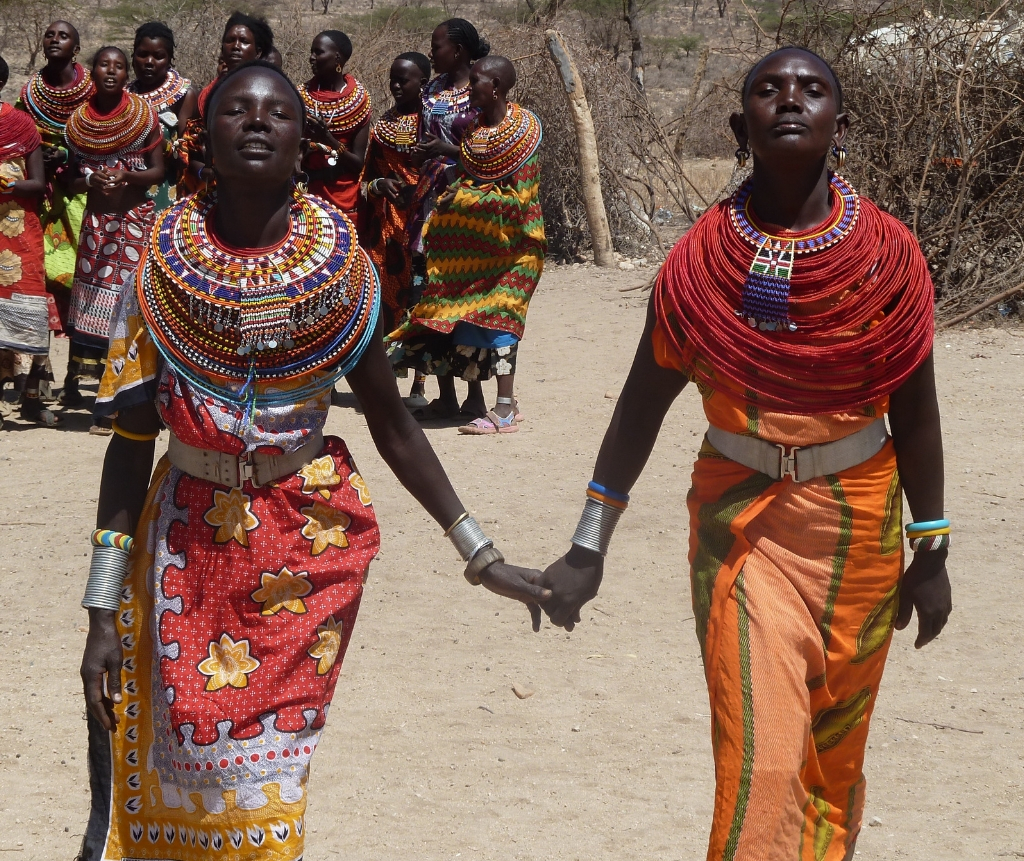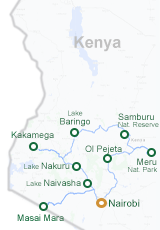
You’ve seen those amazing photos of Maasai warriors adorned with the brilliant red, purple, and blue patterns of their shukas, standing tall and proud with their spears. Or maybe you’ve seen the pictures of their fierce women bejeweled with bright beaded earrings and scarves with the arid African savannah as their backdrop. This fascinating tribe resides in the areas surrounding the Maasai Mara in Kenya and northern Tanzania.

With their history dating as far back as the 15th century, the Maasai tribe is one of the oldest inhabitants of East Africa and still retain many of their traditions as they live relatively uninfluenced by modern day civilization. A highlight of any safari vacation in Kenya is a visit to the Maasai village to get a glimpse into their unique way of life as it promises to be an educational experience – in one way or another. Here’s what you can expect:

The many vivid colors of the Maasai’s garments is one of the first things you’ll notice as you enter the village. It often makes for a photogenic scene as these bright shukas or sheets contrast strongly with the browns and greens of the landscape stretched on the horizon.
Adding to this colorful display is the brightly beaded necklaces, bracelets and amulets worn mostly by the women who use such beaded jewelry to express their identity and social status. Some of these items will be displayed for sale and you can purchase some to help support the village as well as bring home an authentic, handcrafted souvenir from your travels.

The majority of Maasai tribes still practice their customary way of life as pastoralists and warriors with their cattle at the centre of their culture and social life. They are very proud to welcome visitors to their villages and often do so with song and dance, which you might even be able to join in! At certain times, one of the dancers will jump up and down gracefully in what is known as adumu or the most widely known “jumping dance”.
These graceful jumps are several feet high as the warriors form a circle with the jumper-dancer in the center levitating higher and higher to the rhythms of the singers. The higher the jump, the higher the singers will raise the pitch of their voices. You will usually be invited into the circle to try jumping with them too, adding to the dancing fun!

The traditional Maasai village is called a Manyatta and consists of several small huts made of mud and…. cow dung. These huts or boma as they are traditionally called are covered with thatched roofs and constructed in a circle so their livestock can stay in the middle protected from lions and other predators. As an added protection, the villagers also erect thick thorny fences around the huts.
Interestingly, it is the Maasai women who build these sturdy dwellings, only relying on the men to supply them with the necessary materials. They begin with a rugged framework of timber poles interwoven with smaller branches to form the structure, which they then cover with a mixture of mud, grass, cow dung, and ash. Dimensions vary, but the average size of each boma is around 3 x 5 meters and only around 1.5 meters tall. It is certainly a very different lifestyle as an entire family will cook, eat, sleep and socialize within this modest structure, sometimes even sharing the space with small livestock.

The Maasai tribe are traditionalist and have resisted the urge to adopt a more modern lifestyle. As a nomadic people, a typical day in a Maasai village consists of cool and usually busy women and girls who set about milking the cows and goats, and attending to other chores. Later the herders (only men) take the cattle for grazing on the Mara plains, still following their ancient practice of moving along with the water.
That’s why even on a regular safari tour, you’d often see them with their livestock on the savannah that’s also home to elephants, giraffes, zebra and some of Africa’s most dangerous predators. Notwithstanding, the tribe has lived peacefully alongside these wild animals for hundreds of years with a strong aversion to eating game.
Today, Maasai land boasts the finest nature and wildlife areas in East Africa, so it does seem somewhat weird to go exploring on someone’s ancestral land without at least sparing an hour or two to meet the people and catch a glimpse into their ancient traditions. If a visit to the Maasai village is not included in your safari adventure itinerary, consider adding it.
Enjoy a chance to experience their culture with any of our tour selection below!
Check out the beautiful culture of the Maasai people:
This ten day safari gives nature lovers an extended and diverse view of Kenya; its wildlife, its wonderful landscapes and its warm-hearted people. Given the country�
Price From
This 12 days Kenya Safari is loaded with national and regional gems, this tour will engage you in a birding experience of a lifetime. The locations and destinations have been carefull

Price From
Taking an aerial view of Kenya by flying into the Masai Mara gives you a different take on the landscape. It also gifts you extra time to spend inside the park and to take advantage of the facilities

Price From
If you don't want to miss useful and interesting articles, leave us your email.
Also you will be the first to know about all discounts and offers.
Personalized service by travel experts with first-hand knowledge
Customizable tours to your preference
400+ 5-star TripAdvisor and Google reviews
Booking Security - Money - back guarantee & 24/7 support
Africa FlashMc Tours and Travel is a member of Kenya Association of Tour Operators (KATO), membership code: No.AS/687. KATO is one of the key tourism trade associations in Kenya, representing the interests of over 400 of the most experienced professional tour operators in Kenya. As a member, our services have been checked and are bound by the Code of Conduct to provide the highest possible quality of service to their clients. The scheme is insured to guarantee your holiday safari in the unlikely event that a bonded KATO member ceases operating.
Click one of our representatives below to chat on WhatsApp